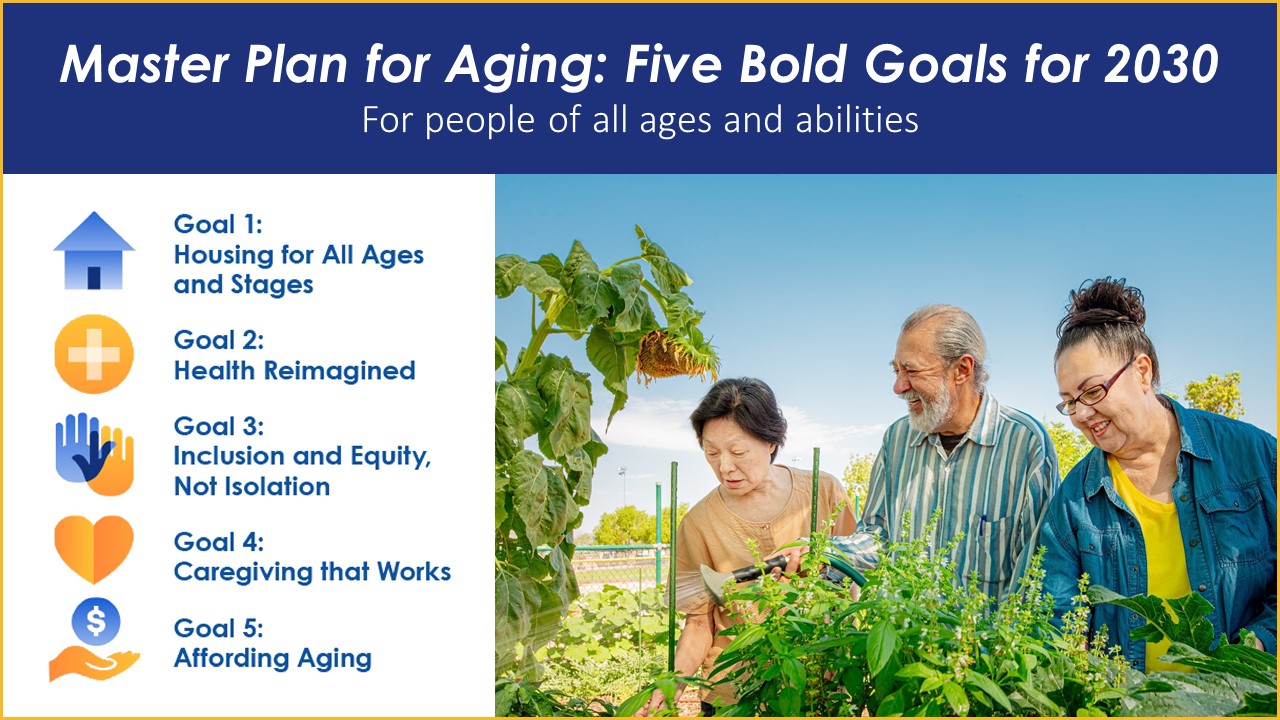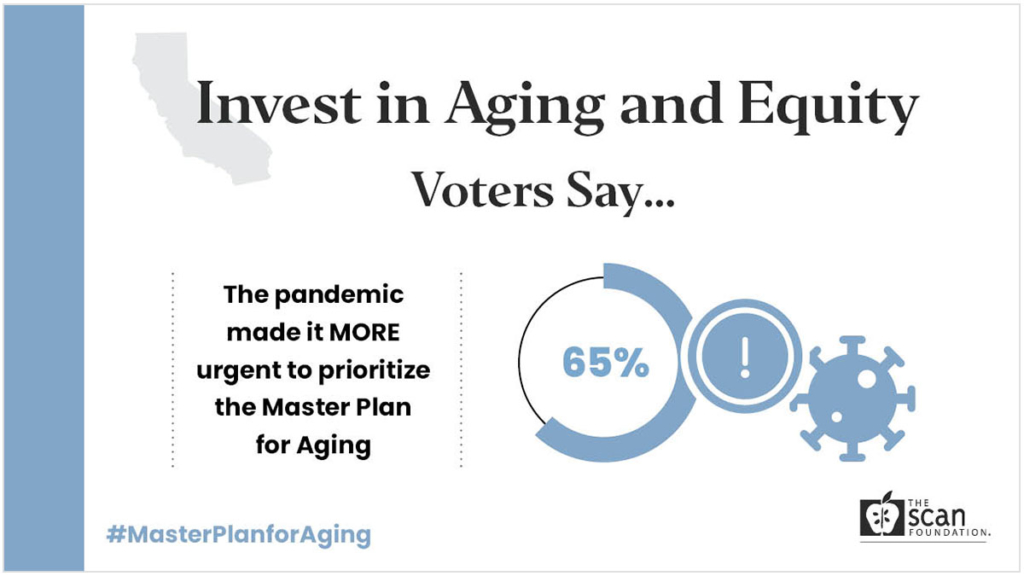Every State Should Have a Multisector Plan for Aging
By 2030, nearly 1 in 5 Americans – or 73 million – will be age 65 and older. The aging of America touches each of us—as individuals, family members, friends, and community members. It affects our collective ability to provide and cover the range of services needed for our increasingly diverse population of older adults, people with disabilities and family caregivers. Each state needs a Multisector Plan for Aging (MPA) to ensure that all Americans can live and age well in community and get support if and when needed.
Rural MPA Toolkit
Check out “A Toolkit for Developing Local Multisector Plans for Aging in Rural Areas,” a resource packed with adaptable steps and tools to help rural leaders create age-friendly, equitable communities for older adults.
The Challenge
People are struggling to find and finance the care and support they need as they age. This impacts everyone, such as:
- An older adult who comes home from the hospital without services and supports in place;
- A younger disabled adult who can’t afford the services needed to remain at home;
- A millennial caring for an aging parent while balancing employment and childcare.
As the population ages, state and local governments must think boldly about system reform to improve how services are delivered and financed.
The Opportunity
Across the country, states are recognizing the need to conduct high-level, cross-sector planning to prepare for the aging population and ensure that the needs of older adults, people with disabilities, and family caregivers are met over the coming decade. An MPA establishes a 10-year blueprint that guides the restructuring of state and local policy and programs while connecting the public, private, and independent sectors in modernizing and, where necessary, creating systems-based solutions that touch all major areas of the aging life experience (e.g., health, human services, housing, transportation, consumer affairs, employment, income security).
To learn more about the status of Multisector Plans for Aging (MPA)
development and implementation nationally, visit:
Focus on: California’s Master Plan for Aging
In June 2019, California Governor Gavin Newsom issued an Executive Order calling for a state MPA. After an extensive planning process, California’s plan was released in January 2021. This historic effort delivered a comprehensive roadmap for system-wide change in how services are coordinated, delivered, and financed to better meet the needs of our state’s aging population.
Stakeholders celebrated the MPA’s two-year anniversary in January 2023, highlighting 2022 accomplishments. Read the latest annual report to learn how the MPA is benefitting older adults, people with disabilities, caregivers, and families.

Aim and Approach
We focused on three critical elements in our efforts: 1) elevating the voices of people; 2) raising awareness; and 3) building cross-sector partnerships.
1) Elevating the Voices of People
The Latest Perspectives
In 2019, we engaged Greater Good Studio to develop a series of community design workshops that elevated the voices of people, presenting day-in-the-life stories from California’s rural, suburban, and urban regions. This culminated in an executive summary and final report with recommendations for the state to consider as it developed the California MPA. Greater Good Studio also followed up with these individuals in 2020 to see how their lives had changed one year later, particularly in relation to the realities and challenges of COVID-19.
More Videos
2) Raising Awareness
Effectively communicating the value of and need for an MPA is a critical component of gaining stakeholder buy-in. Our 2019 Forum showcased the efforts underway in California. Also, developing strategic communications that are tailored to each audience can educate and enlist champions. Voter polling (e.g., May 2021’s poll) and media coverage help demonstrate public support to executive (state) and legislative leaders. Watch the May 2021 briefing.

3) Building Cross-Sector Partnerships
We joined with philanthropic partners to support California’s development of the MPA. This partnership established a joint fund to assist the state with research, policy development, stakeholder outreach, and strategic communications.
Our Partners
Leveraging partnerships has been critical to The SCAN Foundation’s efforts to grow support for MPAs across states. In California, our partners include advocates and policymakers, and those in philanthropy (see visual), strategic communications (Lucas Public Affairs, Perry Communications Group), polling and research (J. Wallin Opinion Research), and academia.
News on transforming care for older adults
A Look at MPA Planning and Implementation Across California
Reporting Explores NY’s Ongoing MPA Efforts
- Health Equity in Aging,
- Long Term Services and Supports (LTSS),
- Models of Care and Financing,
- Multisector Plan for Aging (MPA),
- Health Equity in Aging,
- Long Term Services and Supports (LTSS),
- Models of Care and Financing,
- Multisector Plan for Aging (MPA),
- Long Term Services and Supports (LTSS),
- Models of Care and Financing,
- Multisector Plan for Aging (MPA),

